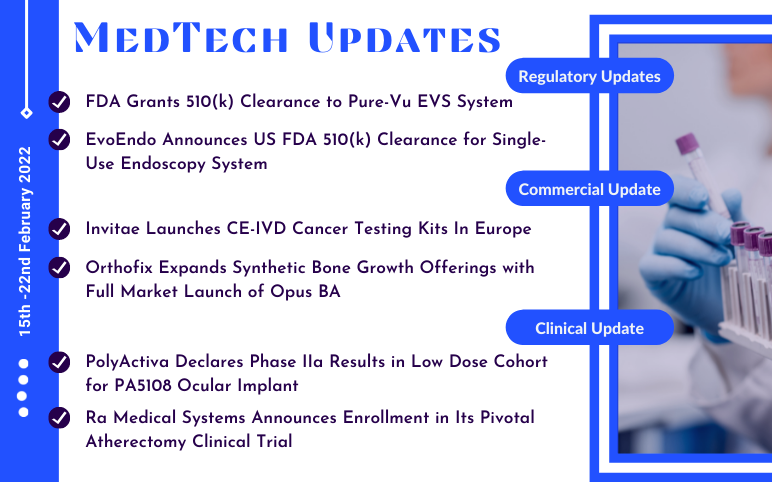The long journey of Biosimilars: Is it an emerging opportunity?
Nov 22, 2019
Table of Contents
Biologics are not new drugs, their use as a medicine has been around for over a century. The first use of Biologic drug dates back to the year 1796 when the vaccine to treat smallpox was created.
They have been revolutionizing the treatment approaches for the past many years. Hormones, insulin, blood products, cytokines, growth factors, gene and cellular therapies are the different forms of Biosimilars, in addition to fusion proteins, vaccines, interferon, and monoclonal antibody (mAb) products.
However, the past decade experienced a wave of appreciation towards the biologics. For conditions like anaemia, autoimmune disorders, rheumatoid arthritis, Crohn’s disease, ulcerative colitis, Gaucher disease, and cancers they are the last option.
Downloads
Click Here To Get the Article in PDF
What are Biologics?
Biologics (or Biopharmaceuticals) are a complex group or class of proteins that possess therapeutic properties. As defined by one of the major pharma players, Amgen, Biologics are large molecules derived from the different parts of the living cells such as proteins, DNA, antibodies, etc., which help in diagnosis, treatment, and prevention of the disease.
Top approved biologic drugs include AbbVie’s Humira, Roche’s Rituxan, Amgen’s Enbrel, Genentech’s Herceptin, Celgene’s Revlimid, Janssen’s Remicade, BMS’s Opdivo, and Merck’s Keytruda. They have transformed the treatment landscape by delivering an efficient cure, where first-line treatment alternatives have failed. They promise a better future in the form of the last-line resort; however, the manufacturing of Biologic drugs is not an easy task. Usually, biologic drugs are produced by engineering the living cells to create the required changes in the cells using recombinant DNA technology. Consequently, the cost associated with biologics is one of the major factors that dishearten the patients.
Here come the Biosimilars. Due to the associated cost, there is a huge demand for the biosimilars so that they can be easily available in the market and can be accessed by the common people.
Several World organizations like WHO and the EMA are also supporting the entry of Biosimilars in the Pharma world because of their ability to treat patients effectively and comparatively at a lower cost.
How are Biosimilars different from Biologics?
Bio-Similar, as the name implies, is the biologic entity that is similar to another already FDA-cleared biologic drug known as (reference product) available in the market. Similar to safety, potency, and treatment approach, Biosimilars, however, differ in some of the molecules that are rendered inactive. They have no clinically meaningful differences. Similar Biotherapeutics products (SBPs) are approved on the basis of their level of similarity and analytical characteristics, hence are approved for the same indication as that of their reference product, so as to reduce future harms.
Biosimilars should not be confused with generics which are the exact copy of the reference products.
Is it easy for Biosimilar to receive a recommendation?
The recent decade has observed many stringent changes in the way Biosimilars get approval. The WHO sets standardized regulations and guidelines for regulatory bodies to help them through the approval process. The pre-set framework ensures a balance between the development and the access of the biosimilars to market. The established safety profile and knowledge of clinical preparation of the biologics do help in the development of similar biotherapeutic products (SBPs).
Written standards established through the Expert Committee on Biological Standardization (ECBS) serve as a basis for setting national requirements for production, quality control and overall regulation of biological medicines.
The major concern of the regulatory bodies lies in the way these Biosimilars are manufactured. Biosimilars are generally large heterogenous protein molecules. Their structures and properties change with a slight variation in the conditions they are manufactured. Thus, no Bioproduct can be an exact copy of the other. In order to overcome this challenge, routine clinical trials are conducted, with different lots of the production under different conditions and the results are compared with the reference product.
After the enforcement of the Biologics Price Competition and Innovation Act (BPCIA) by the US government in 2009 under the Patient Protection and Affordable Care Act, a standard approval pathway for Biosimilars came into action. Since Biosimilars are not identical but similar, the US FDA demands proper and lengthy clinical trials for their assurance of administration in patients. Till date, the US FDA has drafted various guidelines to provide insights to Pharma companies on approval and evaluation process of the biosimilar. The first Biosimilar to receive the FDA recommendation was in the year 2015.
As of 2019, a total of 23 biosimilars have been approved in the US.
However, in the EU, the first biosimilar got approved way back in 2006 – a growth hormone somatropin. In the EU, the first biosimilar which got approval was the growth hormone somatropin in the year 2006. Since then, the EU has approved the highest number of Biosimilars and has the most extensive process of approval through EMA. As per DelveInsight’s Biosimilar market assessment, European nations hold the potential to provide lucrative opportunities to pharma companies in Biosimilar market.
Followed by the EU countries, Asia-Pacific countries including, China and India, mainly dominates the Biosimilar market. The biosimilar market landscape will further leap forward due to an increase in the interest of people and the governments in the Biosimilars.
However, as more and more Biosimilars for the same biologic drug rolls out, the pricing issues and availability of the drug will automatically get sorted out. Due to the similar technology and almost the same procedure of the trials, they offer only partial relief to patients when it comes to cost factor.
Where do Biosimilars stand in the market?
The demand for healthcare is growing. So is the innovative approach to treat conditions. Biologics, which rescue the patients when everything else has failed is one of those innovative and technologically advanced treatment approaches. However, their cost acts as a huge barrier.
As the patent expiry of the biologics’ drugs approaches chances for biosimilars to dominate in the pharma market increase. It wasn’t rocket science to predict the impact of Biosimilars on the Pharma market. Biosimilar drugs provide relief from conditions at a price affordable to patients.
The availability of data from clinical trials and development of the reference product makes it easier for the pharma companies to produce a similar biotherapeutic product. This helps cut down the expenses associated with the manufacturing and clinical tasks. Thus lowering the cots of biosimilar up to 70%.
The recent expiration of the Biologic drugs will give a kickstart to biosimilar market growth. However, the market trends will vary from region to region. The variability factor comes into account due to the different regulations followed by different Drug regulatory bodies. This has been dejecting many pharma players to enter into Biosimilar market.
Biosimilar Market Drivers
It is only recently that biosimilars have started to gain traction across the drug value chain. Establishment of standard regulatory pathways has started to gain pharmaceuticals and biotech companies to invest in the Biosimilar markets.

Although many companies are investing in Biosimilar market as the original Biologic drug bequeaths the market for its cheaper versions, it will not be incorrect to say that Biosimilar market is still in its infancy. Many pharma companies, which are still new in the biosimilar market are opting for collaborations to avoid the 100% risk, lawsuits filed by patent holders for their original biologics and disapprovals from regulatory bodies.

Moving forward, a careful selection of the asset, in-depth study of the reference product, regulatory guidelines and pathways and a careful study of the risk involved will help the pharma companies to identify the available opportunities in the market and grab them for profitable returns.
Downloads
Article in PDF



